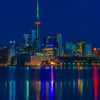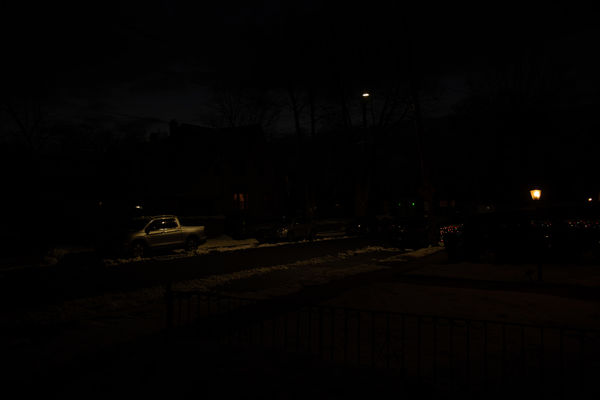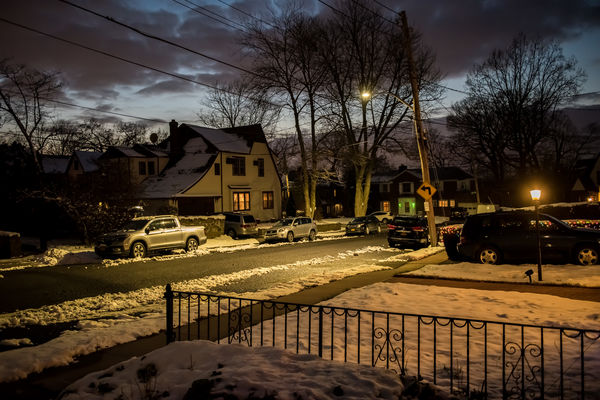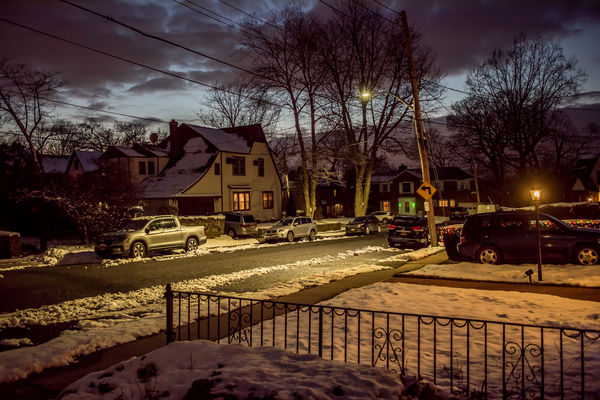What is the difference if you are shooting RAW?
Jan 8, 2020 08:06:16 #
dennis2146 wrote:
I never shoot RAW but my WAG is that shooting as close to possible to what the scene requires to begin with makes for a better finished photo.
Dennis
Dennis
I always shoot RAW (NEF) and use the histogram for exposure, so yes Ichange the ISO as required.
Jan 8, 2020 09:12:54 #
Thank you. I suspected something might be going on in the camera before the RAW file was made but didn't know where to look.
Jan 8, 2020 09:15:40 #
LCD wrote:
If you shoot RAW, then the camera dumps nearly all... (show quote)
First let's remember how photos are recorded. Is basically light. Also let's remember the triangle which is what controls that light. I'm sure you know this but a reminder for maybe those that don't try it was composed of f stop ISO and shutter speed. they all three must be in balance to get a good picture lightwise. Although f-stop shutter speed also control other things, ISO only controls one, and that is the sensitivity (to light) of the sensor.
The more open the shutter the more light. The slower the shutter speed no more light. The higher the iso the more sensitive it is too light.
Now go out 10 or 11 in the morning a good light day, set up to take your photo unit well-balanced would you like meter and then take your ISO up if you start at 100 ticket up to eight hundred to a thousand, and don't change the other two settings take your picture and look at it what is it look like. Then take one again with ballast settings probably that ISO 100. You will then visually see what the iso does and this should answer your question. And you should get a big yes. You should get the same thing as if you had your shutter wide open or your shutter speed way too slow, but you could try that also because you will get the same results.
Shooting raw gives you more control in post to recover some of the errors, but not all. In the test above you should be completely washed out and unrecoverable because everything is blown. And your normal shot you can change anything and everything you want in post because you got it right or close to right in the camera.
i hope this makes sense.
Paul (CHG CANON) gave you some good info.
Jan 8, 2020 10:01:53 #
LCD wrote:
If you shoot RAW, then the camera dumps nearly all... (show quote)
Getting a reasonably good value for exposure is important for capturing a reasonably good image whether you are shooting RAW or not. If you shoot RAW then you actually do have more latitude to get the exposure wrong and still get a decent image but still it is better to get the exposure right, even with RAW. You can adjust exposure time and you can adjust the aperture to give you that proper exposure, but adjusting ISO is a third way to make that adjustment.
What is captured by the sensor is a two-dimensional array of digital integers, generally each integer is between 12 and 14 bits. For this discussion, let us assume it is 12 bits, so the numbers are in the range from 0 to 4095, each one showing the degree of light intensity. Most show only that, but a subset of pixels show only green intensity, another subset show only blue intensity and a third subset show only red intensity. For our purposes here we can just ignore these color distinctions.
Suppose you expose properly and one of the pixels reports an intensity of 4095, but you then decide to expose longer or open the aperture a stop; other pixel intensities may become larger, but that one pixel will still report the maximum value, 4095, because it cannot grow any larger.
But now at the other extreme, suppose you have under-exposed to the degree that all of the pixel intensities are in the range from 0 to 15; you only make use of four of the twelve available bits. In post-processing you can increase the exposure in a technical sense so that these four bits are the most significant of the 12 bits rather than the least significant bits that the sensor reports, but you still only have four bits of information for each pixel. This is true whether it is the camera firmware that does the processing or it is your computer that does the processing - you only have four bits of information and that is not much detail.
But this is where adjusting ISO comes into play. If you adjust the ISO to 1600 instead of to 100 then the camera hardware inserts an analog amplifier into play that (roughly speaking) multiplies each pixel intensity by 16. The effect is to introduce some noise but to expand the number of meaningful bits from four to eight; about as much detail as our eyes can see. You get more detail though at the cost of introducing noise.
The advantage of adjusting ISO is that the adjustment is made in hardware before the image is even digitized. That allows you to capture detail that would otherwise be lost in the process of digitization.
Jan 8, 2020 10:23:34 #
Changing ISO changes the amount of signal amplification at analog to digital (AtoD) time. Light hitting a pixel produces an analog signal which gets converted to a specific digital value depending on the bit depth choice you make in setting up your camera. Some cameras use a technique called ISO Invariance to limit the range of amplification in the AtoD process. The amplification to make low light values higher also includes noise (electronic and IR) which is what gives rise to concern about high ISO settings. In sum, higher ISO settings impact RAW data values because RAW data is the result of the AtoD process.
Jan 8, 2020 11:07:53 #
Kozan
Loc: Trenton Tennessee
CHG_CANON wrote:
It depends on your camera model. Research the topi... (show quote)
Paul, you mean you are actually asking someone to take the time and effort themselves to experiment instead of asking the UHH community for help? How dare you! Sir, you do a disservice to all the lazy people who wants someone else to do their job!



Jan 8, 2020 11:25:36 #
When the camera is set to shoot RAW data the information registered by the sensor is not called a file. A JPEG is a file and the RAW data the camera made was converted to a file by the camera software. To make it clear, RAW data per se has no intervention by the camera software.
You simply shoot as you please and the camera collects that information straight to the sensor.
RAW data to be successful requires software capable of editing that information so special software is required. JPEG is the universal file and ALL editing programs can read it. For RAW data to become the image we envisioned experience editing the data available from the sensor is necessary. In the beginning this process could be frustrating and case in point is a sunrise or sunset where the actual colors we saw will not be entirely present in the RAW data. Colors, contrast, WB and other parameters can be modified at will so all the data is very flexible.
You simply shoot as you please and the camera collects that information straight to the sensor.
RAW data to be successful requires software capable of editing that information so special software is required. JPEG is the universal file and ALL editing programs can read it. For RAW data to become the image we envisioned experience editing the data available from the sensor is necessary. In the beginning this process could be frustrating and case in point is a sunrise or sunset where the actual colors we saw will not be entirely present in the RAW data. Colors, contrast, WB and other parameters can be modified at will so all the data is very flexible.
Jan 8, 2020 11:31:32 #
LCD wrote:
If you shoot RAW, then the camera dumps nearly all... (show quote)
Read The Digital Negative by Jeff Schewe. Even the older version (updated edition due in May 2020) will answer all your questions. A good read!
Correction: A new edition is not coming out. There is simply going to be a way for students to "rent" the Kindle version for a semester.
Jan 8, 2020 11:43:04 #
LCD wrote:
If you shoot RAW, then the camera dumps nearly all... (show quote)
Changing the ISO to a higher number is just like turning up the volume on a stereo. It amplifies everything including the noise. In the old days with noisy electronics, when you turned up the volume there was an audible "hiss" and other non-musical sounds coming from the speakers. On many cameras the situation is no different - you turn up the "volume" or gain on the signal coming from the sensor, everything gets brighter. There is always noise in the image, but when properly exposed, the image or "signal" is so much higher than the noise you can't really see any noise. If your image is underexposed, or has large areas of dark values, you will see noise in those areas when you increase the ISO.
All bets are off on this when you are looking at the "newer", ISO Invariant cameras. The electronics in these cameras are so "quiet" (contributing little measurable noise) that they can produce images that were taken at base ISO and underexposed up to 5 stops, yet they will look as good as the image taken at the correct ISO.
The first image was taken at ISO 100, the base ISO for a Nikon D810.
The second image was taken at ISO 3200.
The third image was the first image but adjusted almost 5 stops to match the tonal values in the first image.
Any questions?

Jan 8, 2020 11:59:14 #
"The question is, in this situation, does your camera do anything different with the light data at a given shutter speed/aperture just because you change that setting? It seems to be that the answer is no, it makes no difference, but maybe someone out there knows more than I."
The answer is YES. You can underexposed and adjust in post as in Gene example. You can not increase the ISO to make it overexposed and adjust in post. So YES changing the ISO changes the way the RAW data is recorded.
The answer is YES. You can underexposed and adjust in post as in Gene example. You can not increase the ISO to make it overexposed and adjust in post. So YES changing the ISO changes the way the RAW data is recorded.
Jan 8, 2020 12:24:50 #
[quote=camerapapi]When the camera is set to shoot RAW data the information registered by the sensor is not called a file. A JPEG is a file and the RAW data the camera made was converted to a file by the camera software.
PLEASE, PLEASE, LET'S NOT GET THE RAW FILE ISN'T AN IMAGE ARGUMENT STARTED AGAIN. Its a pointless argument about semantics. This is a photography website that the argument to a semantics website. Bits and bites are expensive. Don't waste money on meaningless arguments.
To make it clear, RAW data per se has no intervention by the camera software.
This is generally completely true, although there have been many who thin certain brands of cameras massage the files between off the sensor and raw file. I have heard that said about Canon and Sony, but I have no experience with those or that subject so my response is "dunnnow."
You simply shoot as you please and the camera collects that information straight to the sensor.
Oops. Camera collects info FROM sensor and sends it TO the memory card.
A simple mistake any of us could have made. No offense intended.
PLEASE, PLEASE, LET'S NOT GET THE RAW FILE ISN'T AN IMAGE ARGUMENT STARTED AGAIN. Its a pointless argument about semantics. This is a photography website that the argument to a semantics website. Bits and bites are expensive. Don't waste money on meaningless arguments.
To make it clear, RAW data per se has no intervention by the camera software.
This is generally completely true, although there have been many who thin certain brands of cameras massage the files between off the sensor and raw file. I have heard that said about Canon and Sony, but I have no experience with those or that subject so my response is "dunnnow."
You simply shoot as you please and the camera collects that information straight to the sensor.
Oops. Camera collects info FROM sensor and sends it TO the memory card.
A simple mistake any of us could have made. No offense intended.
Jan 8, 2020 12:28:04 #
BebuLamar wrote:
"The question is, in this situation, does you... (show quote)
Correct! Onlyl underexposure can be corrected.
There is at least one other thing - when you increase ISO you typically diminish dynamic range. The question is (and I don't know the answer) is there an advantage to shooting at base ISO in an invariant camera vs shooting at up to 3200 ISO, when considering dynamic range. Food for thought, or like they refer to these things a question for further research.
Jan 8, 2020 12:49:05 #
camerapapi wrote:
When the camera is set to shoot RAW data the infor... (show quote)
This makes no sense. A raw file is a file consisting of raw data. A jpeg file is also a file, which consists of the adjustments made according to the camera settings, applied to the raw data (aka "converted"), and downsampled from a 12, 14 or 16 bit file to an 8 bit file, compressed from a huge color space to a neat little sRGB or AdobeRGB color space, and compressed by a factor of 1:4, 1:8 and 1:16, data-wise, where duplicate image data is removed and discarded, and what is left is a reasonable representation when the image data is decoded (decompressed with missing data interpolated) to show the original scene in many cases.
Both are files.
Sunrises and sunsets represent a case when actual colors are recorded in raw data, but might be discarded in camera generated jpeg due to dynamic range, color gamut and color channel clipping limitations.
Jan 8, 2020 12:55:47 #
Gene51 wrote:
Correct! Onlyl underexposure can be corrected.
There is at least one other thing - when you increase ISO you typically diminish dynamic range. The question is (and I don't know the answer) is there an advantage to shooting at base ISO in an invariant camera vs shooting at up to 3200 ISO, when considering dynamic range. Food for thought, or like they refer to these things a question for further research.
There is at least one other thing - when you increase ISO you typically diminish dynamic range. The question is (and I don't know the answer) is there an advantage to shooting at base ISO in an invariant camera vs shooting at up to 3200 ISO, when considering dynamic range. Food for thought, or like they refer to these things a question for further research.
If you shoot at 3200 ISO resulting in no loss of details in the highlight then you have better tonal gradations in the RAW file than one taken at ISO 100. That is you are making use of all the 14 bit available. When you shoot at ISO 100 only the lower bits are used and the high order bits are not used because there is nothing in that brightness range to record. However you only need 8 bit to have good tonal gradations so it makes little different but you have the safeguard as there may be some parts of the images that is bright.
Jan 8, 2020 13:10:46 #
camerapapi wrote:
When the camera is set to shoot RAW data the information registered by the sensor is not called a file...
Based on my own experience, I suspect the poster has reached the age where the meat memory is starting to return invalid data. Consequently, when thinking of the word "image", the command is given to the fingers to type the word "file".
Happens to me a lot.
If you want to reply, then register here. Registration is free and your account is created instantly, so you can post right away.









